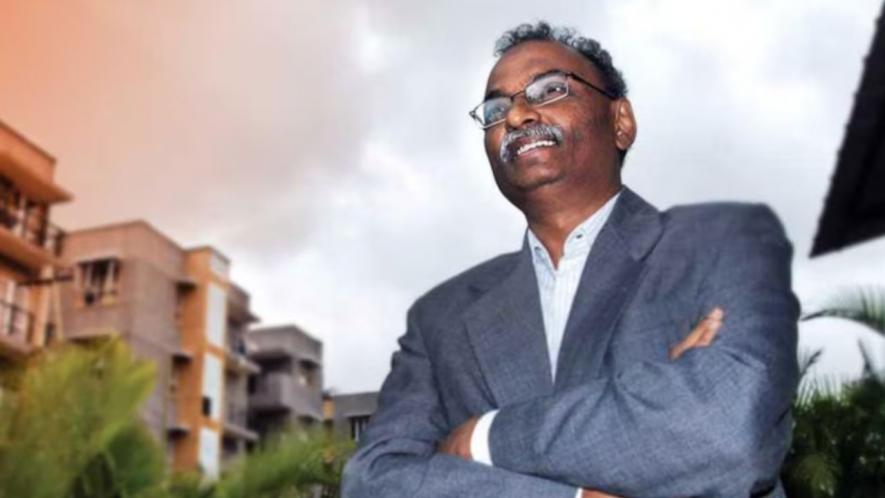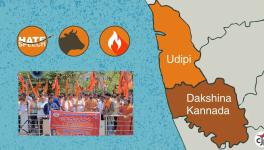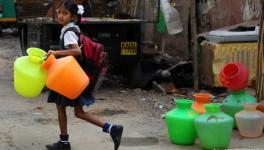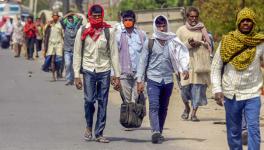Freshwater Demand: Can Karnataka Satellite Towns Quench Their Thirst?

Dr. Hariharan Chandrashekar | Image: Special Arrangement
The Congress government in Karnataka has proposed the construction of five satellite towns to decongest the burgeoning city of Bengaluru. This is slightly more ambitious than the four satellite towns that the BJP had proposed during their term in office.
The development of satellite towns without adequate infrastructure such as schools, hospitals, industrial areas, and affordable housing would fail to meet the government's objective of alleviating congestion in the city. An ambitious plan like the construction of five satellite towns must be accompanied by a sustainable blueprint. Concerns have been raised about the potential regional imbalances being created within the state. Additionally, effective management of water resources will be crucial for the project's success.
The development of satellite towns should not disproportionately drain resources from other regions in Karnataka while focusing solely on Bengaluru. Addressing this challenge is of utmost importance.
Looking at the prospect of increased demand for freshwater with the new proposed towns, NewsClick spoke to Dr Hariharan Chandrashekar, a senior fellow at the Indian Green Building Council, to shed light on the matter. He has been working in the field of water conservation for several decades.
Edited excerpts from the interview:
Nikhil Cariappa: There are proposals to construct new satellite towns around Bengaluru to decongest the city. Could you provide a brief overview of the current water consumption in the city and the extent to which water is being recycled?
Dr Hariharan Chandrashekar: The city consumes around 200 crore [2 billion] litres of water per day. The Bangalore Water Supply and Sewerage Board (BWSSB) draws around 140-145 crore litres of water from the Cauvery River. However, due to leakages of up to 40%, only 90 crore litres of water reach the city. The other half of the city's demand is met by private sources such as groundwater extraction. It may be people’s own borewells and those that are exploited by private tankers for supply to apartments and offices. BWSSB does an effective job of treating the wastewater that returns to it. An interesting fact that deserves to be better known is that more than 10 crore litres a day of treated sewage water (from the Yelahanka Sewage Treatment Plant) is being moved from the city to drought-prone districts of Chikkaballapur and Kolar. It is also supplied to the Northeast of Bengaluru past the airport. This treated water is steered into about 120 lakes around those parts. This steady, natural recharging of aquifers improves groundwater levels. This serves as a sustainable, long-term model.
NC: What are the sources of water supplied to Bengaluru?
HC: In 1895, the Hessarghatta Lake was the only source of drinking water (for a population of under 2 lakh people). By the 1930s, the TG Halli reservoir was built, and these two sources served the city’s needs until the early 1970s. Water was brought in from the Cauvery River to cater to the first wave of urbanisation in the 1980s. This supply has now plateaued at a daily volume of about 90 crore litres (after leakages in distribution). Recent efforts to recycle used water as drinking water [the Kolar model being a forerunner] have to be complemented by the localising (rainwater harvesting) of water use. Moreover, all bulk water users have to be mandated to treat and use wastewater to halve their freshwater demand. This will reduce the massive public expenditure on wastewater treatment [the Kolar model cost about Rs 1400 crores] while ensuring the used-water infrastructure is part of the costs borne by water users themselves. This will build resilience. The five satellite towns, for example, will have to ensure that their demand for external water supply is zero. This will ensure that the master plan integrates water-bearing capacity without burdening the city water supply.
NC: Are these resources enough to cater to the five new satellite towns? If not, why?
HC: It is best explained with the examples of existing satellite towns. Kengeri has a population of 85,000 people residing within 10 sq. km. And Yelahanka with 4 sq. km hosts a little over 40,000 people. The daily demand in the Kengeri satellite town is about 1.7 crore litres of water. The calculation assumes a demand of 200 litre/day per person. With the current annual rainfall of about 1.2 meters, rainwater falling on 10 sq. km or 1,000 hectares is about 1200 crore litres annually. The annual demand (at 1.7 crore litres/day) is only 600 crore litres! If every apartment and home can ensure that they meet 20-25% of their need from the rainwater captured, the freshwater demand will reduce by 80%. This net residual balance of 20% (or about 10 lakh litres) can be easily met by the satellite town’s public infrastructure for harvesting, treating, and using rainwater falling on surfaces. Both these satellite towns will be water-positive [not just water-neutral] if they only complied with existing regulations of the Karnataka State Pollution Control Board (KSPCB).
NC: What rainwater harvesting initiatives can be implemented to meet the increased water demand from the construction of the five satellite towns?
HC: Firstly, there must be rooftop water harvesting systems for drinking water. Secondly, we need surface water management systems to drive rainwater into small, local water bodies (existing or created at nominal costs). Thirdly, the focus should be on the treatment of wastewater (eliminating the concept of 'wastewater') and utilising it to fulfil 50% of the water requirements for homes/buildings, with the capital cost recovered within 2-2.5 years. And finally, installing water-efficient fixtures at every tap and shower in homes, and putting up digital meters (for real-time display) for every water user to know how much water they used in a day is a good measure.
These four solutions are embedded already in the regulations of the KSPCB and are violated by nearly every building in the city. This has to change. Resilience is built with self-help. As citizens, we have to build our own strengths, and not expect the government to do everything. Water Supply Boards have to become Water Management Boards. The KSPCB has to be empowered to enforce. Where the carrot doesn’t encourage, the stick should work.
NC: What is non-revenue water? Can you please elaborate on how water is lost before it reaches its destination?
HC: Non-Revenue Water (NRW) is an issue with almost all water supply utilities in India. It includes physical and commercial losses and free authorised water for which payment is not collected. The energy costs borne by the government for long-hauling water from Cauvery is over Rs 100 per 1000 litres. The cost of transportation is among the highest in the world because the Cauvery River is around 90 km away. The city is also located on higher ground, with a difference of more than 300 metres above sea level.
The ‘leaks’ in distribution are caused by people ‘stealing’ water, or from damage or poor maintenance of water pipelines. A staggering 50-60 crore litres are ‘lost’ daily by BWSSB, which is a leakage of 40%; the financial and energy loss is massive. In recent years, we have seen ‘leak detection systems’ that show you the exact locations of such leakages without the need to physically dig up and inspect. To reach leakages of under 10% is within the realm of possibility.
NC: If this project does proceed, are there any other sustainable models of development (of satellite towns) that the government may adhere to?
HC: We need decentralised solutions for water management without dependence on the water utility board or on deep borewells. Secondly, we need localised solutions for all wet and dry waste generated in the satellite towns [the BBMP has laws that are not complied with]. This is an essential prerequisite at the master plan stage of developing the satellite towns. The location of the satellite towns has to ensure that commuting to work is minimised. Industrial areas and other infrastructure for employment or livelihoods must be present within the zone. Sustainable mobility will be another challenge the city faces and needs to be borne in mind at the design stage itself.
Get the latest reports & analysis with people's perspective on Protests, movements & deep analytical videos, discussions of the current affairs in your Telegram app. Subscribe to NewsClick's Telegram channel & get Real-Time updates on stories, as they get published on our website.
























